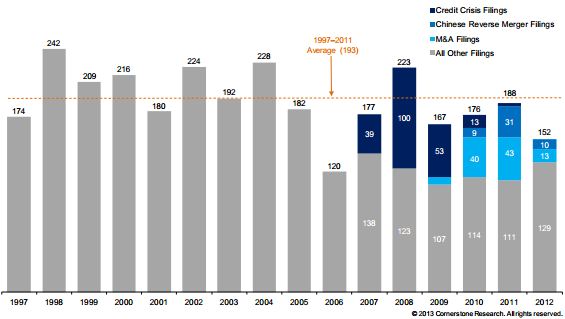Securities Lending by ETFs
(Feb 2013)
One of the most contentious but least understood aspects of the stock market is short selling. Short selling refers to selling a stock that you do not own at current market prices, with the hopes that the stock will go down in price. The stock can be purchased in the market at any time to close out the position and, if the stock has decreased in price, the short-seller will realize a profit. Obviously, the only way to accomplish this is by borrowing that stock from someone else.
Typically,...
Chinese Markets are Closed--So What Happens to China-based ETFs in the US?
(Feb 2013)
Happy Chinese New Year! Markets were closed in many Asian countries last week, while US markets remained open. As noted by several commentators, this means that while US ETFs that hold Chinese equities were actively traded, their underlying assets were not. So what does this mean for China-based ETFs traded in the US?
First, it's important to note how ETFs relate to their underlying assets. Essentially, ETF shares can be created by certain traders (called authorized participants) by buying...
Structured Certificates of Deposit Week
(Feb 2013)
Over the past several months, we have noticed more and more bank deposits that resemble structured products. These products go by various names: market-linked certificates of deposit, equity-linked certificates of deposit, contingent interest certificates of deposits, etc. For parsimony, we refer to these types of products as "structured CDs" or simply "SCDs".
We think structured CDs are a very significant development, as they can be designed to provide highly complex exposure, are almost...
Securities Class Action Filings Decrease in 2012
(Feb 2013)
Earlier this year, Cornerstone Research released 2012 review of Securities Class Action Filings in conjunction with the Stanford Law School -- see the press release. The report notes that the number of federal securities class action filings have decreased in recent years and, in particular, has fallen nearly 20% from 2011 to 2012. For the number of filings over the past sixteen years can be found below (Figure 2 in their report).
Cornerstone attributes the majority of the decline in class...
SLCG Research: Volatility Smiles from Leveraged ETF Options
(Jan 2013)
Leveraged ETFs are a perennial subject on our blog. I thought I'd take this opportunity to highlight a recent research project entitled "Crooked Volatility Smiles: Evidence from Leveraged and Inverse ETF Options" that I recently completed with my colleagues Geng Deng, Craig McCann and Mike Yan.
While studying options data on leveraged and inverse ETFs, we began to notice a pattern such that deep-in-the-money call options -- contacts whose strike price is well above the current spot price --...
Why a Physical Copper ETF Might be a Really Big Deal
(Dec 2012)
JP Morgan recently obtained approval by the SEC to launch a new copper ETF that, instead of holding derivatives linked to copper, will actually accumulate physical copper itself. While this may not seem like a thrilling market development, there are serious concerns that if this ETF becomes popular and garners significant assets, the world market for copper might be upended. Here's why:
Think of demand for copper as having two components: demand for industrial or productive uses and demand as...
Derivatives in Active ETFs
(Dec 2012)
Over two and a half years ago, the SEC initiated a moratorium on approvals for new ETFs that made extensive use of derivatives such as options and futures contracts. Much of the concern at that time was that derivatives-based ETFs, particularly leveraged, inverse, and futures-based ETFs may not have investor protections or oversight commensurate with their level of risk. Regular readers of this blog know that we have spent a good deal of time discussing those issues in addition to our ...
CFTC Amendment to Rule 4.5 Survives Challenge
(Dec 2012)
Last Thursday, a Federal judge ruled on a challenge to the CFTC's February 2012 amendment to Rule 4.5 that will require mutual funds and ETFs that have sufficient non-hedging participation in derivative markets to register with the CFTC as commodity pool operators (CPOs). The CFTC defines a CPO as a "person engaged in a business similar to an investment trust or a syndicate and who solicits or accepts funds, securities, or property for the purpose of trading commodity futures contracts or...

